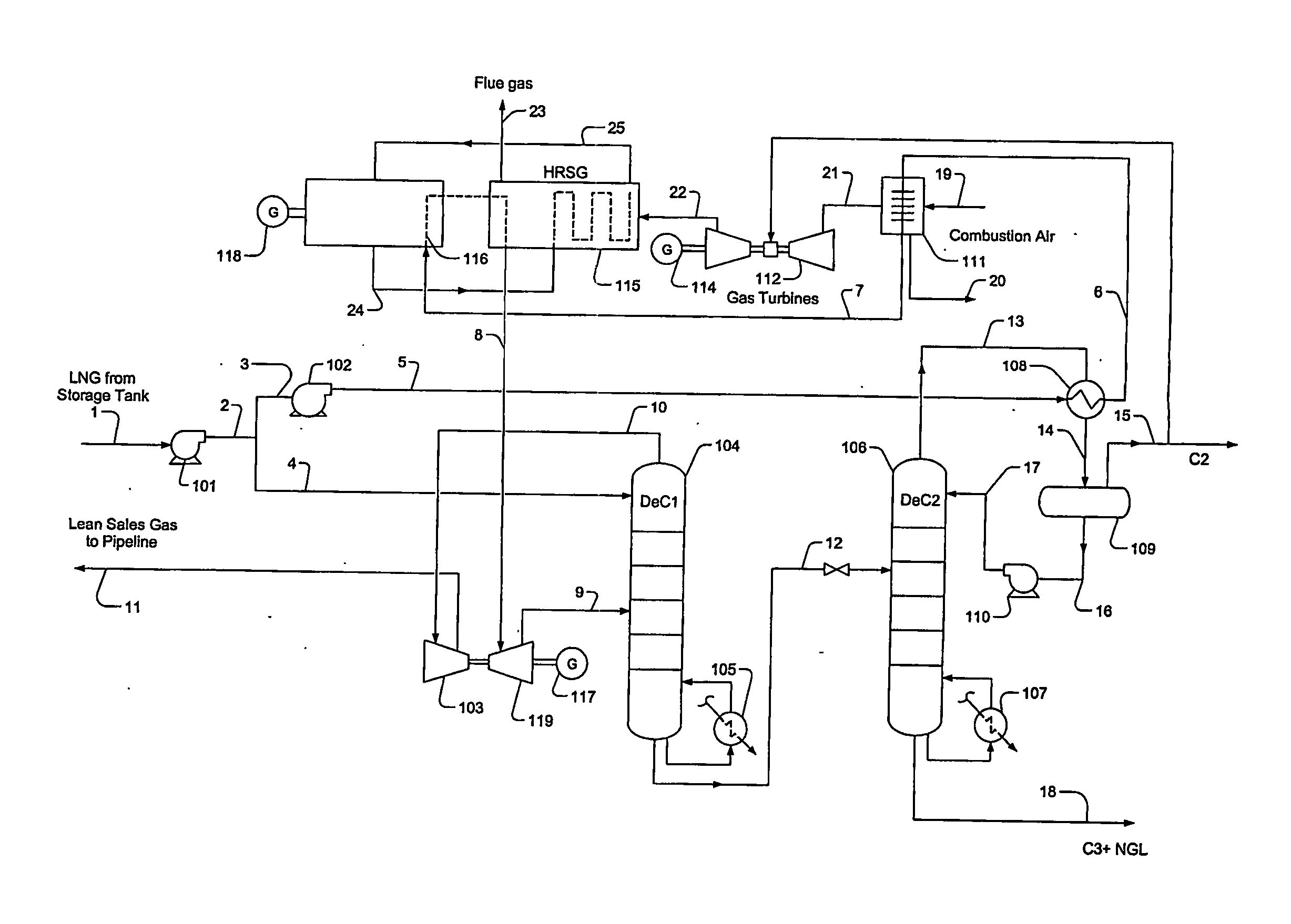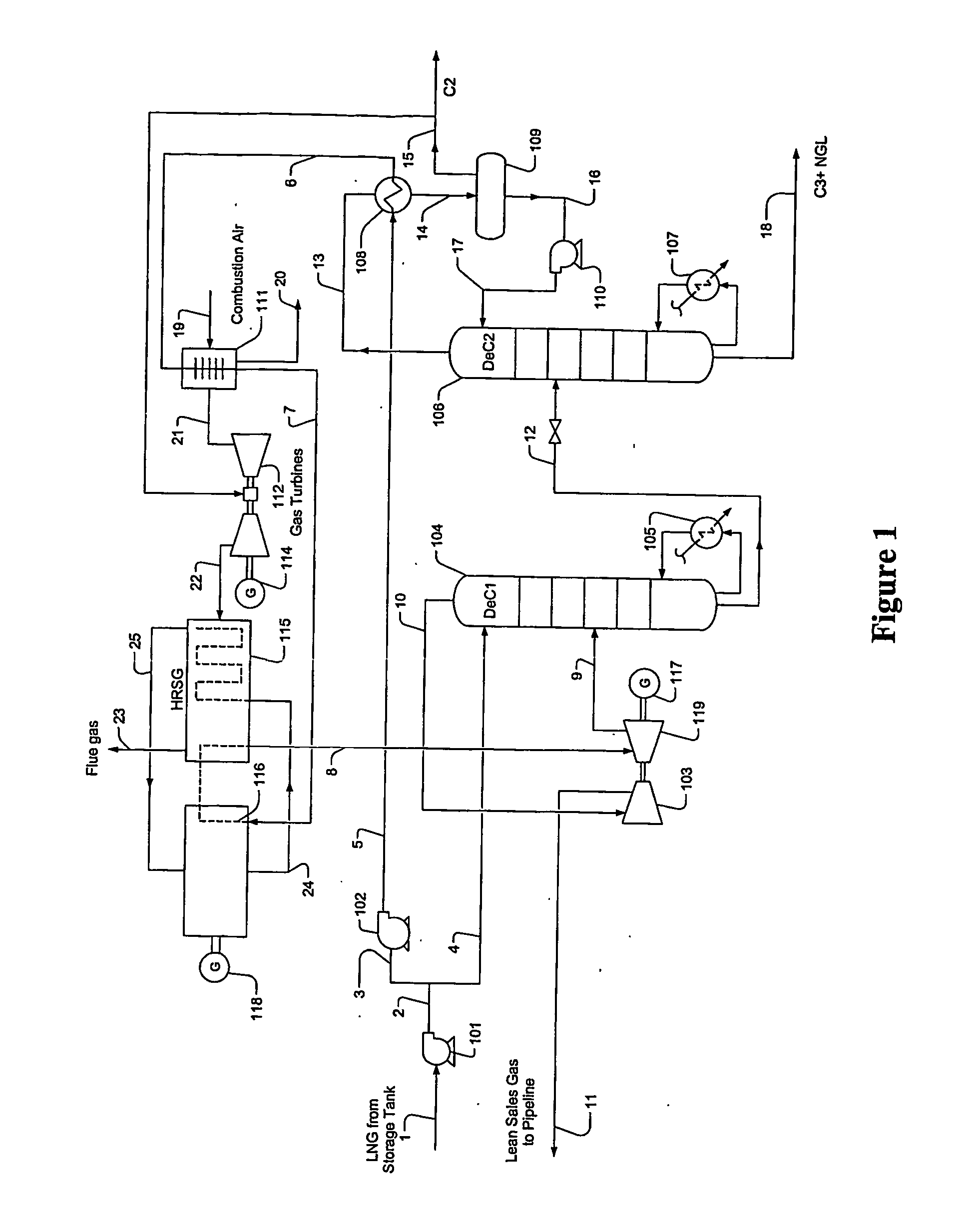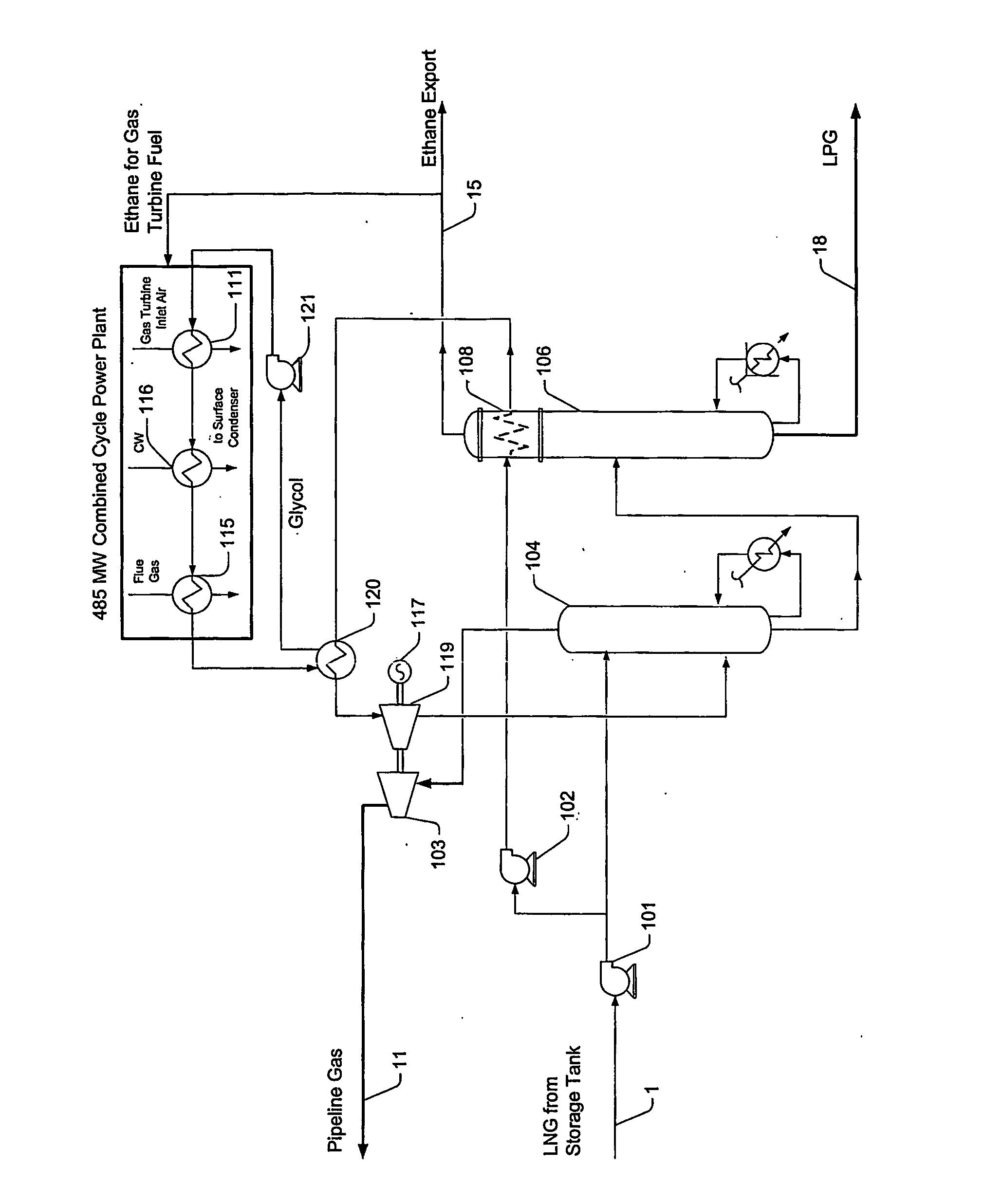Liquefied natural gas regasification configuration and method
a technology of liquefied natural gas and configuration, applied in the field of gas processing, can solve the problems of increasing the volatility of the natural gas market price, affecting the ocean environment, and the cost of seawater systems, so as to improve the overall power generation efficiency of the combined cycle power plant, reduce safety concerns, and improve the overall power generation efficiency
- Summary
- Abstract
- Description
- Claims
- Application Information
AI Technical Summary
Benefits of technology
Problems solved by technology
Method used
Image
Examples
examples
Exemplary Calculation of Components in Selected Streams
[0032] In an exemplary configuration substantially identical with the plant configuration as shown in FIG. 1, the mol fraction of various components of selected streams were calculated, and the results are listed in the table below. LPG is the C3+ bottom fraction of the deethanizer, and the pipeline gas is the demethanizer overhead product.
Compo-nentLNG FeedEthaneLPGPipeline GasN20.00650.00000.00000.0073C10.88160.01760.00000.9878C20.05220.97230.00530.0042C30.03280.00920.54070.0006iC40.00710.00000.12060.0000NC40.01070.00000.18180.0000iC50.00400.00000.06730.0000NC50.00200.00000.03370.0000C6+0.00300.00000.05050.0000Heat1,1531,7502,985999Value Btu / SCF(HHV)MMscfd1,20060701,070Barrel519,90037,70051,200431,000per day
[0033] For this comparison, a plant configuration of FIG. 2 was employed to compare power balances and thermal efficiencies of the integrated LNG regasification facility to a conventional regasification plant with seawat...
PUM
 Login to View More
Login to View More Abstract
Description
Claims
Application Information
 Login to View More
Login to View More - R&D
- Intellectual Property
- Life Sciences
- Materials
- Tech Scout
- Unparalleled Data Quality
- Higher Quality Content
- 60% Fewer Hallucinations
Browse by: Latest US Patents, China's latest patents, Technical Efficacy Thesaurus, Application Domain, Technology Topic, Popular Technical Reports.
© 2025 PatSnap. All rights reserved.Legal|Privacy policy|Modern Slavery Act Transparency Statement|Sitemap|About US| Contact US: help@patsnap.com



